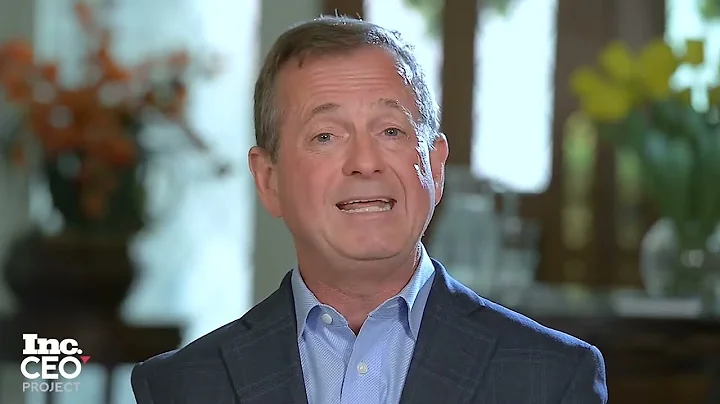
2021 is another year of explosive growth in private equity. The growth rate of private equity investment funds is as high as 62.46%, with a total scale of nearly 6.12 trillion yuan (public equity is 25.78 trillion yuan). In 2022, the market will continue to fluctuate, and how to digest the existing scale and obtain excess returns will still test many private equity fund managers.
During the 2021 China Private Equity Fund Awards Ceremony hosted by Chaoyang Sustainability and co-sponsored by China Galaxy/Galaxy Futures, Li Bei, founder and fund manager of Banxia Investment, was interviewed by a reporter from China Business News. Banxia, which is good at macro hedging strategies, aims to create a "Chinese version of all-weather". Facing this year's extremely uncertain internal and external environment, how can it achieve "all-weather"? How do private equity funds weigh the challenges of scale and performance?
Detailed explanation of the allocation logic of stocks, bonds, and commodities
Li Bei previously wrote that at the end of last year, he communicated with some channels and investors, and the assets he held included: a large number of long positions in Chinese government bonds, and short positions in U.S. government bonds in stages. Hedging; holds a small amount of short positions in industrial commodities; individual stock positions are partially hedged with stock indexes, and net stock positions are controlled in single digits.
"From the results, since the beginning of the year, as of early February, taking low volatility funds as an example, the bond category has achieved a profit of more than 1%, the stock category has achieved a loss of less than 1% (the average decline of long positions is greater than that of short positions), and the commodity category has achieved a profit of more than 1%. There was a loss of 2%. Generally speaking, we avoided the sharp decline in the stock market and achieved certain positive returns in the bond category. In the first week of the year, we found that the demand for commodities needs to be phased in, and we have to close our positions. "We have lost most of our short positions in industrial products and avoided greater losses." Li Bei told China Business News that the current view remains basically unchanged, that is, the commodity judgment is high at first and then low, and he is not pessimistic about the bond market and is more optimistic. Optimistic about the short end, the stock index is more optimistic about the CSI 500 than the CSI 300 and the Shanghai Composite 50.
Specifically, in terms of commodities, Li Bei believes that commodity prices are high at first and then low at the end. On the supply side, after last year’s shortage, commodities are facing a supply rebound in 2022. For example, in addition to OPEC increasing production by 400,000 barrels per day every month, U.S. production is estimated to have rebounded by 5% or even slightly higher for the whole year. Research by Bank of China International shows that due to recent support from refining profits and a decline in refinery maintenance, the U.S. crude oil processing volume increased by 152,000 barrels per day in the past two weeks, and the operating rate rose to 87.7%.
But in the short term, the reason why it is said to be "previously high" is partly because of the temporary disruption to supply caused by the situation in Ukraine. Goldman Sachs also recently mentioned that Russia’s recent net oil exports (crude oil and products) were 7.3 million barrels per day, of which 6 million barrels per day of shipping traffic faced the most severe disruptions due to restrictions on shipping insurance and letters of credit. , and crews may not be willing to travel to these high-risk areas. While the extent of the current disruption will not be known for weeks, the record discount to the price of Urals crude and difficulties in bidding suggest significant obstacles to shipments by Russian ships. If Iran reaches a deal soon, oil prices will not fall significantly. The global oil deficit in February was twice as large as expected, and Iraq is experiencing an oil supply disruption of 500,000 barrels per day, which is enough to completely offset the production growth potential of Iran's return to the global oil market.
As far as basic metals such as steel, copper, and aluminum are concerned, the operating rate in 2021 is at the lowest level in the past few years. Dual control of energy consumption and power rationing have hindered production expansion, but Li Bei believes that production and supply will gradually pick up this year. For example, copper concentrates are gradually rising, and demand and exports will tend to decline in the second half of the year. Especially considering that overseas have experienced previous inventory replenishment and supply chain recovery, there may be a decline in orders.
However, the judgment of "previously high" is also due to the fact that under the influence of the situation in Ukraine, all walks of life are currently worried that the "upstream crisis" seems to be about to break out. According to statistics, Russian nickel exports account for 49% of the global market, palladium exports account for 42%, aluminum exports account for 26%, and platinum exports account for 13%. Among them, palladium is an important metal required for manufacturing sensors, memory, etc. Russia is also an important exporter of steel and copper. In addition, the black series surged at the beginning of the year. Li Bei believes that this is also because after January, with the start of infrastructure construction, there was a periodic apparent rebound in consumption of steel, which pushed the steel price up, thereby driving upstream iron ore prices.
Recently, the bond market has also been extremely volatile.After last year's bond bull, the yield on the 10-year Treasury note has soared from a low of around 2.67% in late January to around 2.85% currently, hitting bond bulls hard this year.
However, Li Bei believes that there is no need to be too pessimistic about the bond market in the context of the continued easing of monetary and credit policies and the maintenance of growth. Although social finance data surged in January, the structure still needs to be improved. At the same time, according to data from China Real Estate Information Corporation (CRIC), from January to February this year, the sales of the top 100 developers plunged 43.4% year-on-year, lower than -30.9% in December last year. Li Bei is more optimistic about opportunities at the short end (such as 2-year interest rate bonds). If the economy gradually recovers, the corresponding yield curve will steepen, but for now, her view on the yield curve is relatively neutral.
As far as the stock market is concerned, Pinellia is relatively optimistic about the CSI 500 and bearish on the Shanghai Stock Exchange 50 and CSI 300. "The CSI 500 is backed by industrial capital, with relatively small amounts of private equity, public equity and other institutional funds, while the Shanghai and Shenzhen 300 has gathered more public funds and foreign capital. This year, the sales of public funds are less than 1/10 of the same period last year, and overseas tightening Against this background, the net inflow of foreign capital is likely to be smaller than last year. "
Scale expansion needs to be adapted to the circle of competence.
For private equity funds, many institutions face scale constraints after rapid expansion. How to grasp the pace in 2022 is the key. According to data from the Private Equity Ranking Network, as of the end of January, a total of 1,131 private equity funds fell below the traditional warning line, that is, the net value fell below 0.8, and 460 private equity funds fell below the stop loss line, that is, the latest net value was below 0.7.
experienced rapid growth in scale and net worth last year, and Banxia’s current scale has risen to 6 billion yuan. "Our goal is 10 billion. We don't want to be particularly big, but we don't want to be particularly small, because if it is too small, it will not be mainstream enough and will not get the best research resources. 10 billion is a relatively comfortable scale. . "
As for future expansion plans, Li Bei said that "it depends on whether it is comfortable in the future." That is, the pace needs to be controlled. If the profitability, operation management, and customer communication are smooth, then it can further challenge 15 billion yuan. "We hope to use 5 billion as a threshold. The key lies in whether operations and investment research can keep up, and slowly test our comfort level and ability circle."
It is worth mentioning that on February 24, the head of Oriental Harbor But Bin issued a statement saying, "After a meeting with shareholders last week, it was decided that all products of Oriental Harbor with a cumulative net value of less than 1 yuan will be exempted from management fees. This will reduce the company's revenue by nearly 100 million yuan and bring some problems to the company's operations. Pressure. But in difficult times, we hope to tide over the difficulties together with our customers."
In this regard, Li Bei said that he did not support this approach. "Freeing management fees is not a benign thing. Private equity needs to support a team. When the market is not good, management fees are needed to motivate the team and outperform in the medium and long term. The core of the institution is to do a good job in risk control and lose less money, such as Pinellia ternata The maximum drawdown of low-volatility products is stipulated not to exceed 15%, while for high-volatility products, customer expectations need to be managed well. If there is pressure on performance and market conditions, what institutions can do is pay more dividends to customers and reduce the scale to an appropriate level. interval."











![[]. Kyrie Irving arrived in Beijing and officially started his trip to China this year! Yesterday's first stop was at the training base of the General Administration of Sports of China, and conducted the first special training with the players of the youth special training team o - DayDayNews](https://cdn.daydaynews.cc/wp-content/themes/begin/img/loading.gif)









